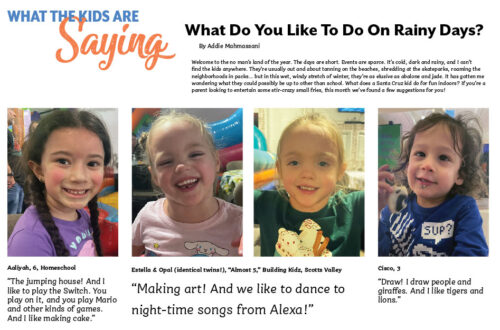Build Your Home Classroom
BY Jhoneé Fillmore
 As we enter another school year, we may need to be prepared for full or partial distance learning. Do you need some ideas on how to physically set up your “home classroom” in order to make it a feel-good and efficient learning environment, even if this is a temporary setup? You know your child and home best so mix and match ideas that will best suit you and don’t forget that if something isn’t working… mix it up again.
As we enter another school year, we may need to be prepared for full or partial distance learning. Do you need some ideas on how to physically set up your “home classroom” in order to make it a feel-good and efficient learning environment, even if this is a temporary setup? You know your child and home best so mix and match ideas that will best suit you and don’t forget that if something isn’t working… mix it up again.
Set Up Base
With some experience from the end of the school year, I suggest setting up a base location for your students. This is where you can begin each day and students can feel as if they are officially stepping into the classroom. This is a good transition from “home” life to “school” life under the same roof. Once you have achieved this mindset, your family can choose each day to stay in the base location or mix it up.
Mix Up Your Location
Don’t get stuck in the same spot everyday. Try to rotate spaces in which your kids are working to keep the ENERGY FRESH! Even if you are space limited, you likely have access to a few spots you may not have considered. You don’t always need a table either as clipboards are awesome portable surfaces. Luckily, my house has enough space for my two boys to travel around in. Some of our favorite spots: dining room table, front porch steps, backyard table, garage, train/LEGO table, individual small desks in playroom, reading on the couch, finding a tree to lean against or any soothing nook.
You may also have various spots being utilized at once by different children. After working together in a group space for some time, I am able to let my kids have this freedom for parts of their schooling. If I plan to give one child a project that he can complete with little or no help, I can join my other child in a different space whereas I am very active in his learning. Visa Versa. Separate spaces also work well when one child needs silence while the other is working out loud.
Tidy & Visually Pleasing
Keep your whole family motivated by two factors:
One, aim to create a space that is tidy for your students to work in regardless of the size or location. A tidy space reduces frustration and anxiousness and promotes creativity and clear thinking.
Two, get creative in your space and have it feel fun and/or educational. You could create a circle time wall, hang some art, letters of the alphabet, chalkboard, dry erase board, etc. Have your kids help make the space feel invited and inspirational.
Designate a Teacher Hub
Most families need an adult to administer the learning game plan. I mentioned that the learning area itself be mixed up to keep us all refreshed, but what about the place we pull from and store our items? Designate one spot that is accessible and efficient.
Create a space within this space that is child specific. Give each child a binder, separate folders or separated bins that contain a spot for: academic calendar, class expectations, assignments, workbooks, book, logins/passwords, completed work, reference materials (site words, multiplication table, tracing sheets), flash cards, scratch paper and their necessary electronics.
Within this space, hang a calendar for you (or older children) to reference weekly or monthly agendas including online engagements, deadlines, and planned activities for each child.
Portable Supplies
I quickly discovered that though our home already had a system for supplies, it wasn’t cutting it for our classroom needs. Gathering and returning these supplies daily from their usual areas wasn’t an effective way to spend my time as a teacher. I decided to create a classroom tote that is easily taken to a new space. Example items: pens, pencils, markers, crayons, erasers, dry erase markers, rulers, tape, glue, scissors, etc.
Reuse & Waste Less
Any opportunity I get I will insert paperwork into a plastic sleeve and use a dry erase marker so that we get multiple uses from a worksheet. Also, in a folder, I save all papers in our house that are no longer needed and only have print on one side. The backsides are awesome for solving math problems, cutting, drawing and creating our own worksheets. Saving paper and ink is worthwhile.
Refueling
Be creative! Make sure that you pause work to get some fresh air or move around. Since we have the flexibility to get silly, we sure do. My older son does circles on his bike and answers a math flashcard every time around while my younger son does laps around the garage once he completes a worksheet. Now my kids are just stalling on their next school task, but it gets them moving.
Remember to feed the brain by offering snacks. My favorite non-messy items include smoothies, cut up fruit, bananas, cheese sticks, pretzels and goldfish.
Need a more specific suggestion? Email me at [email protected]
Be well. Best, Jhoneé
Jhoneé Fillmore, Owner, Missplaced Organizing visit her blog thedavenportcompany.com/missplace







